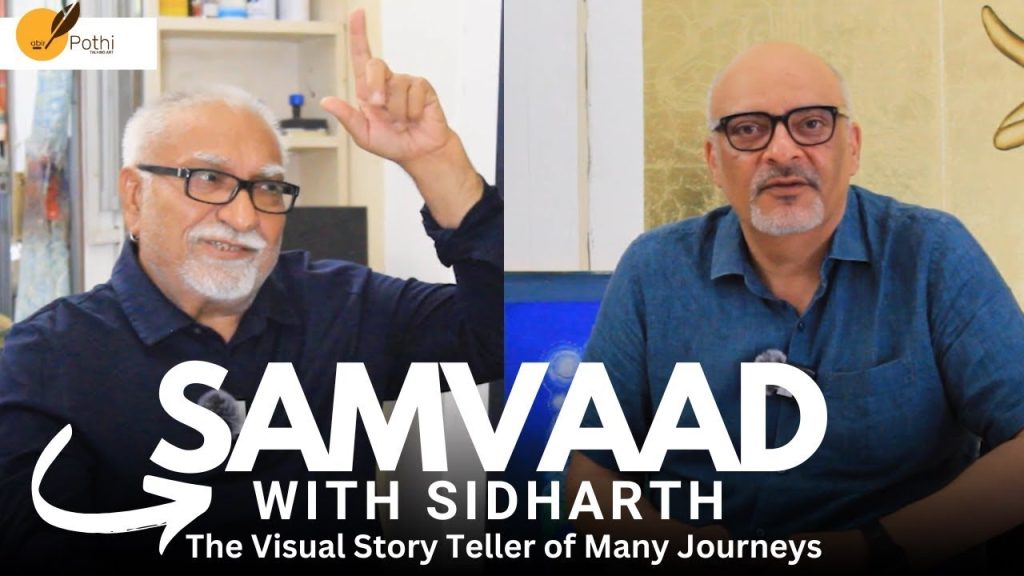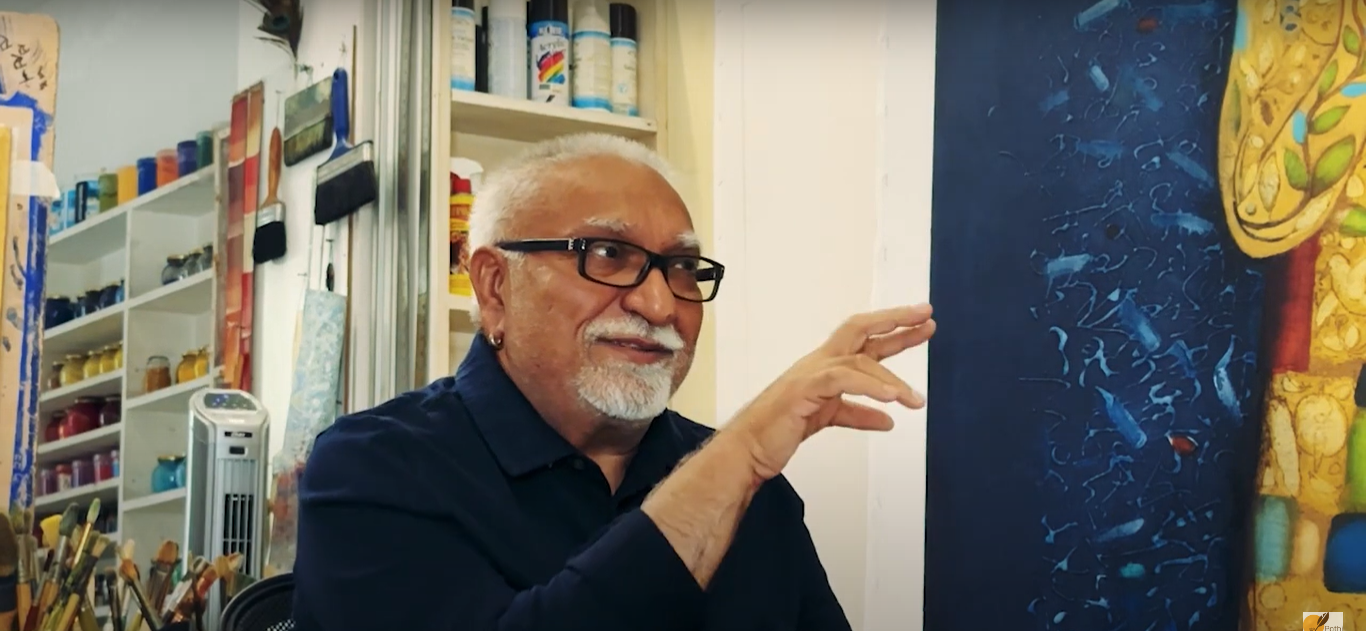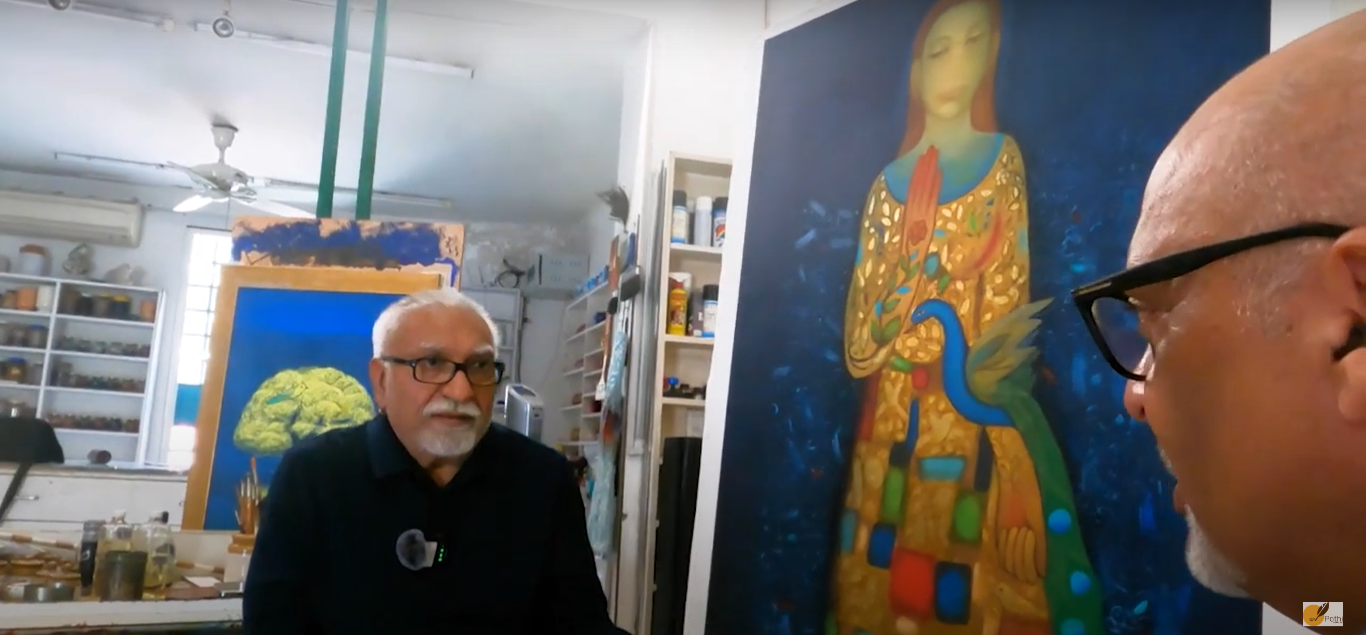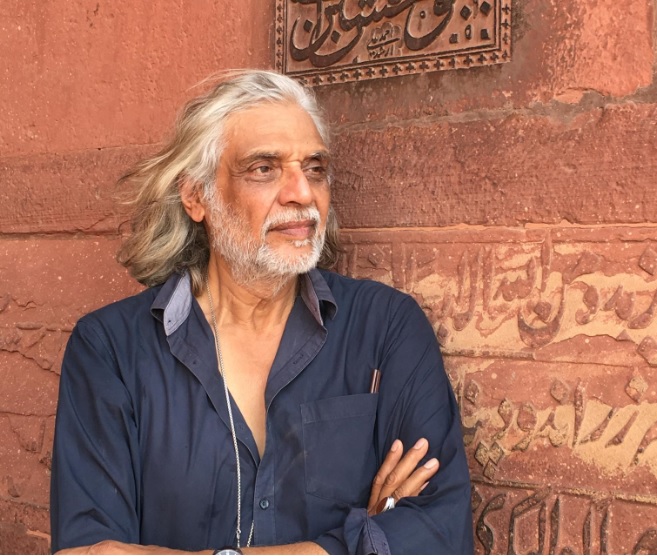Welcome to Samvaad, where art meets conversation, and inspiration knows no bounds. Here we engage in insightful conversations with eminent personalities from the art fraternity. Through Samvaad, Abir Pothi aims to create a platform for thought-provoking discussions, providing readers with an exclusive glimpse into the creative processes, inspirations, and experiences of these creative individuals. From curating groundbreaking exhibitions to pushing the boundaries of artistic expression, our interviews shed light on the diverse perspectives and contributions of these art luminaries. Samvaad is your ticket to connect with the visionaries who breathe life into the art world, offering unique insights and behind-the-scenes glimpses into their fascinating journeys.
This is Part III of Samvaad between Nidheesh Tyagi from Abir and Sidharth. While still at school in his village Sidharth started painting signboards. Working as an apprentice with village mason Tara Mistry, he learned the art of creating murals and friezes. Later he went on to learn the Thangka painting technique from the Tibetan monks in Mcleodganj. He spent some time with artist Sobha Singh (painter) too at his studio in Andretta, Himachal Pradesh. After doing a five-year diploma in painting from the Government College of Arts, Chandigarh he went to Sweden for some time. He is now settled in New Delhi where he has his own studio. Sidharth has participated in more than 135 group shows in the UK, Sweden, the US, Singapore and Hong Kong besides India. An honorary degree of DLitt was conferred on Sidharth in 2012 by Punjabi University, Patiala.
Nidheesh: You were talking about four kinds of arts. What were those?
Sidharth: It is only recently that I came to understand that there are only four types of art. I’ll talk about the illustrative narrative first. It is nothing but the stories that we heard in our childhood. Stories of Jesus, Stories of Nanak, Stories of famous people. We are colouring them. You can see it in my Kangra paintings and Ajanta Alora paintings. You can see it in all the works of the West. This happened everywhere. Indeed, today many artists’ ideas are based on writers. They read writers and their poems. They find inspiration and extract an image from it. And this is an illustrative narrative.
Nidheesh: Yes
Sidharth: Later there were many artists who chose to depict the life of common people. That too is a kind of parable. However, this created protests. That’s why you are not portraying the king and queen, but only the peasants and the common people. Because that too is a parable.
Sidharth: To paint their pictures and to paint them is the same thing. It can be any technique and it does not matter if you create a photographic image, it will not make you a realistic painter. If you make miniatures, you will not be a miniature painter. If you create distortions like Picasso…
Nidheesh – Forms could be different but the overall idea is…
Sidharth: Overall idea is the same.
Nidheesh: Yes
Sidharth: You get a similar idea in the end. People say it is contemporary, I ask what is contemporary? You are doing an illustrative narrative. The most difficult is contemporary, what is contemporary? This is a continuation of an illustrative narrative. I am not trying to be critical, rather I am just trying to prove my terminology. I don’t care what others are doing. It is necessary to exorcise the ghost of every artist, or history is necessary. Being original is another matter. It takes a lot of courage. This is not an easy feat. It kills you, there is a possibility of failure. This is a huge gamble.
Nidheesh: What else?
Sidharth: They talk about conceptual art. What does it mean by conceptual art? It is an illustrative narrative. You have already drawn the picture, you have already thought about the idea and only then, you paint. You simply create a pictorial space, which is nothing but an illustrative narrative. Nothing else. Ok, now what does it mean by contemporary, folk and traditional art? Where is the difference? The idea is the same. If you delve deeper you will get the same idea.
Sidharth: This is the truth. Now, we have a spontaneous narrative. There is only one form in it just like the words. Like a poet uses the words. Just like a poet writes his poem. Who’s the best poet? One who uses words after the words. His words call the other words. Form calls the form. Poets call the form. Moreover, you just create it spontaneously, and techniques could differ. You add distortions to it; you do it in photo-realism, or in any way. Whatever. It becomes a beautiful song because of the spontaneous narrative. Those are not pre-conception ideas. I call it beautiful. Indeed, it is very beautiful. It touches the human heart. That song, that painting, that poem all of them touch people. However, a few cannot find the meaning in it.
Nidheesh: Correct
Sidharth: Right? The artists who follow that technique do wonders. Third is scientific narrative. Now, what is scientific narrative? It is something where you have to find yourself in it. You are so original in it. Leave the history behind. Leave whatever happened in history. You have to develop your own technique. You have to choose your own colours. You have to take risks just like a scientist and that is how you can discover something new. That is a scientific narrative. Now, let us talk about realism. I can have a debate on this topic. Generally, it happens as well. What is realism? I ask you. Assume a blank white canvas, Is it real or abstract?
Nidheesh: Real
Sidharth: It’s a real thing. What do we call it? It is a white plain canvas. Just assume a stone, a stone which is lying somewhere, you clean it a bit and put it. You are not doing anything to it. Is it abstract or a real thing? It is a real thing. Now, assume you paint red strokes on the canvas. Will you call it abstract? No. We will call it a red canvas. The real thing. This is my question to you. What is abstract now? Realism is actually abstract. Do I know you? Do I know the stone? Do I know the shape, which I made? Not really. We just say that a butterfly flies and sits on a flower. Why does it go there, the reason is different? Now, you start creating metaphors. This and that, butterfly is my friend. Right?
Transcribed By Abhishek Dixit.
Read Part IV below:
Samvaad with Sidharth: The Visual Story Teller of Many Journeys (Part 4 of 5)

Contributor







